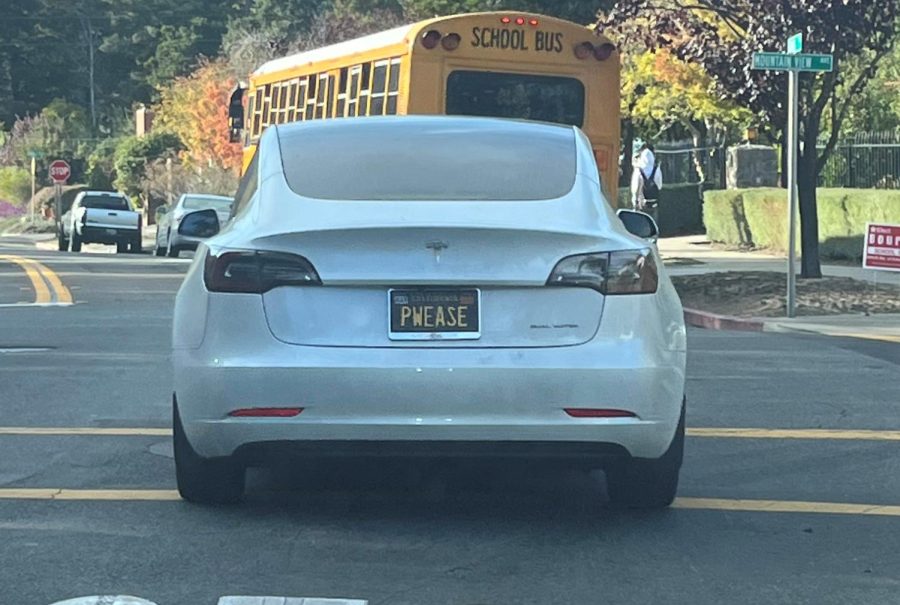Is Electrifying the Car Industry Worth It?
December 13, 2022
Transportation accounts for 16% of all global greenhouse gas emissions. With the growing issue of climate change, there has been an amplified focus to lower this number with the hope of saving our planet for future generations. One of the most popular potential solutions is to switch from fossil fuels to electricity as means to power our cars, and do this for transportation as a whole. Though widely accepted, this proposed solution presents many issues that have so far remained unresolved.
While using electricity does not create any emissions as opposed to an internal combustion engine, this is not to say that it goes without a carbon footprint. This is due to the fact that power plants burn fossil fuels and coal to create electricity. As stated by www.eia.gov, 61% of electricity is made by burning fossil fuels and coal. With this in mind, internal combustion engine(ICE) cars convert just 12-30% of the energy contained in the fossil fuels to mechanical processes, while electric vehicles(EV) cars can convert 80% of the energy provided into movement. At surface level, this debunks the claim that electric cars are worse than gasoline cars, but the issue is far more complex.
The main portion of carbon emitted from EV’s is the result of extracting raw materials from the earth needed to produce batteries and other components. To produce an electric vehicle, it emits roughly double what the average gas power car emits, between 14 and 7 metric tons of carbon respectively, sometimes reaching 18 metric tons for larger vehicles such as the infamous Tesla Model X. And while ICE cars produce more metric tons of C02 over their lifespan, with an average of 57 metric tons–29 metric tons more than the average EV–this information is presented in a deceiving manner. In reality, the average ICE car, if maintained properly, lasts far longer than an EV, achieving an average of 200,000 miles, compared to an EV’s average of 150,000 miles before the battery loses carrying capacity. And to further level the playing field, according to nature.com, the European Union set quotas requiring at least 45% of a car batterys to be recyclable by the time they’re replaced. To meet these quotas, electric vehicle companies are “prematurely taking out batteries from EV’s,” further decreasing the lifespan of electric vehicles. With this figure in mind, EVs’ lifetime emissions are still better than their ICE counterparts, but far more comparable.
The decreased emissions for electric vehicles comes at a cost that receives far less publicity than deserved. To produce EV batteries, there is a plethora of metals and minerals needed, including cobalt, lithium, nickel, manganese, and many others. Carbonbreif.org explains how this relates to the environment; “we will need at least 30 times as much lithium, nickel, and other key minerals to meet global climate targets by 2040.” Extracting these materials from the earth is a ghastly process that has yet to be improved. Lithium is oftentimes extracted from poorer countries, such as Argentina, Chile, and Bolivia, which use child labor and infringe upon human rights violations as means to get lithium. There are also many indirect effects of mining these minerals that result in soil degradation, water shortage, biodiversity loss, and damage to the ecosystems greatly affecting the indigenous people of these less developed nations.
Electric vehicles in their current state should not be perceived as the end all be all solution, but with time comes innovation, and technology improving almost every aspect of EV’s are being worked on all over the globe. Electric car companies boast new feats in engineering not only making electric cars more practical for the average consumer, but our planet too. Alternative transportation, such as hydrogen cars, could become commonplace in the future. Carbon dioxide removal, a process in its early stages, can capture carbon dioxide from the air to make fuel, allowing us to remain carbon neutral and keep our beloved internal combustion engines on the road. The future that lies ahead remains unclear, but mankind will continue to innovate to reach a solution for the growing environmental crisis one way or another.
The most environmentally friendly thing that you can do as a consumer is to continue to drive whatever car you are currently driving, so long as it gets fair gas mileage and meets emissions standards. If you are in need of a new car and it no longer makes sense to continue fixing your old vehicle, consider buying a used, preferably hybrid car with high gas mileage. Hybrid vehicles get extremely high gas mileage, while containing batteries 1/10th the size of standard electric vehicles. Other alternatives, such as hydrogen cars, might be a worthy investment, with them boasting true carbon neutrality and being generally cheaper than their EV counterparts. Unfortunately, with a lack of fuel cell charging stations across the country, attaining one is unrealistic for most consumers. Fortunately, California contains over half of the 107 fuel cell stations across America, making hydrogen cars feasible for locals in the state.






































